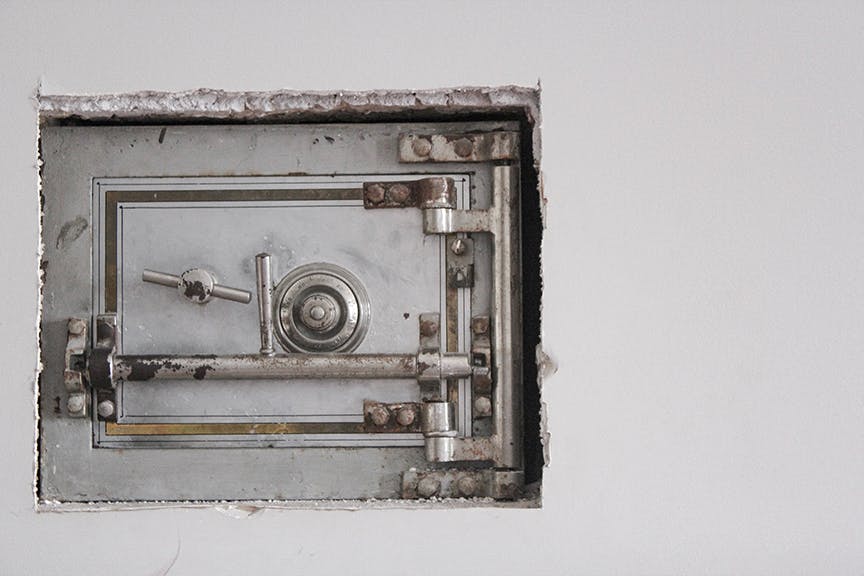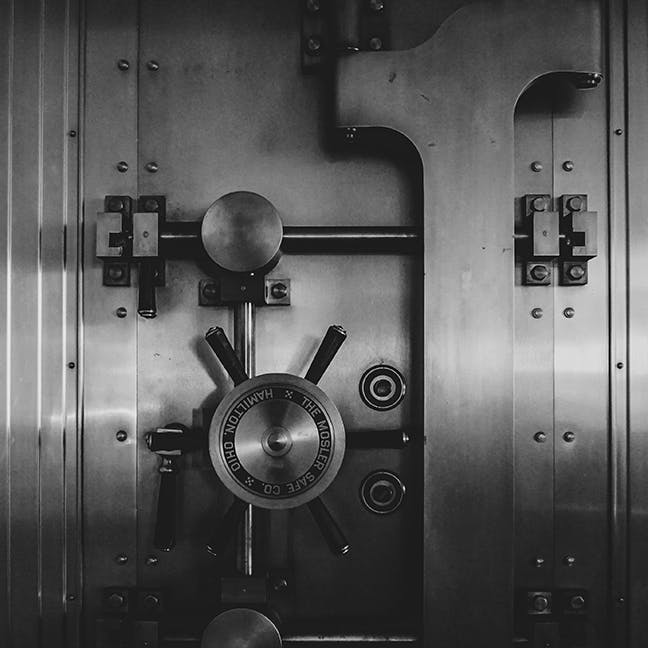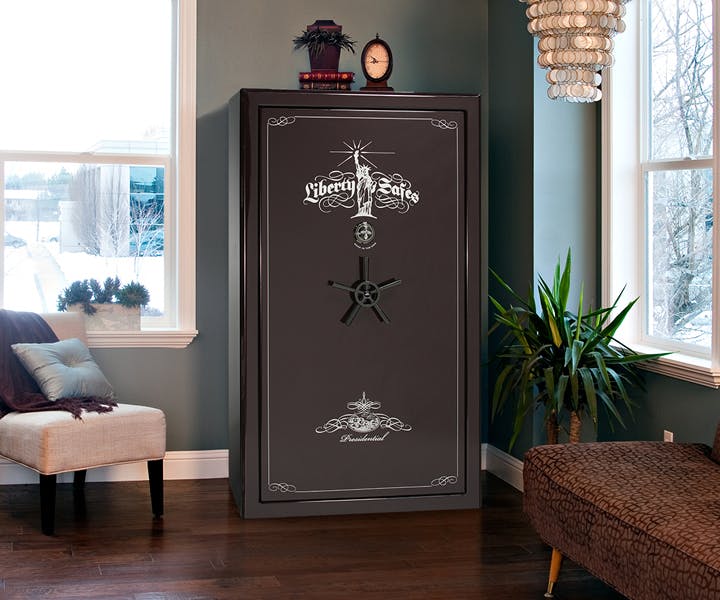
Burglary is a frightening prospect for many homeowners, especially if you live in a questionable area of town. There is good news: burglary has dropped to an all-time low since the FBI began recording totals in 1997. Unfortunately, many burglaries are not simply performed by random criminals that live miles away. It is more common that burglaries will be performed by nearby neighbors who have studied your daily habits and the added security of your property.
When you hear the term burglar, you may think of a silent stalker sneaking into your home in the middle of the night. In truth, breaking and entering at night is very difficult, especially for anyone dumb enough to get caught loudly breaking windows or prying open your front door. Most burglaries happen in the middle of the day when you are not home, giving the burglar plenty of time to explore your home looking for valuables. If, heaven forbid, your burglar is a family friend or even a family member, they may be looking for something specific like sensitive information, heirlooms, or cash.
According to Jacksonville State University, the average cost for an individual break-in is $2,000. It is equally astounding how quickly burglars can rack up their “earnings”: burglars can be in and out in as little as ninety seconds.
Security systems and cameras can catch them in the act and track them down, but this is after the incident, and you will never be certain that you’ll get your items back, especially if they are easily-stashed items like documents, flash drives, and smaller electronics. Instead of slowing them down or letting the police track them after the damage has been done, consider stopping the burglary attempts before it even begins with reliable floor safes installed in your home for maximum protection.

Safes and Safe-Cracking
Still visible in modern media, thieves cracking safes with stethoscopes, borehole drill attacks, and even cell phone encryption-breaking software has intrigued generations of moviegoers and book readers. And why not? Though the locking mechanism, the type of door hinge, and the construction may change, the idea of the floor safes does not; you might find the very idea of breaking into something for a valuable prize at the end is much like a puzzle with a time limit. Safeman.org.uk gives a little bit of the modern history of safe-cracking, but no matter the era, safes have always had a single goal: to stop or stall would-be burglars from accessing whatever was inside. And thief protection is at the heart of the goal!
In the 1950’s, it was not uncommon to find a solid steel safe filled with concrete between the walls. This served two purposes: to make the safe too heavy to move and too difficult to cut into. This didn’t stop burglars from breaking in with saws and drills. Thermic lances and acetylene torches are recent developments, but these have a major weakness for those without practice: you are more likely to roast anything within the safe before the safe breaks open. With the development of nitroglycerine, explosive safe breaching became an effective way of blowing past a lock and safe door cheaply and without much difficulty. This method is obviously loud, however, and usually requires the safe to be taken off-site to be opened.
Today, so long as the safe itself cannot be stolen, burglars will usually avoid a safe unless they know the code or find the door open (which can happen). With the proper choice of safe, however, you will not have any worries about your safe being stolen from your home just to be forced into later. The greatest protection a floor safe can offer is complete immobility. Below is a video with more information about floor safes and their installation.
Choosing the Right Type of Floor Safe
There are many different types of safes for different purposes, including rifle and handgun solid steel safes, small and large lockboxes, and simple cases with combination locks. The type we want to focus on are safes that can be set inside the very floor of your home.
Maintaining the safety of your valuables can depend on where you keep them. A floor safe can be set in many different locations. They can be installed in your bedroom, concealed beneath beds or inside closets to provide another layer of added security. They can also be encased in concrete at the foundation of your home as a fireproof document box in case of emergencies; wall safes can also do this. These types of safes with solid steel construction inside a concrete floor come in many different sizes to accommodate the kinds of belongings you wish to protect, from heavy safes with lots of storage space to thin safes with a drop slot perfect for documents and financial records.
There are new safes with a different lock type that have further improved the security that safes can provide. An electronic lock with an electronic keypad wired to your home’s power can be set to shut off the moment your electricity does. A biometric lock registered with your specific fingerprint will ensure no one else can access your safe, even if they discover your password. Some safes even have timed locks that can only be opened at specific times during the day and can even be set to remain locked on specific dates such as weekends. To give an example of the usefulness of a timed safe, these are often used in department stores and restaurants for cash deliveries to banks set at specific times. They can even digitally record when they have been opened and closed.
To give you a better idea of which to choose, you should understand the concept of ratings for floor safes. As illustrated by Secure Your Stuff, these ratings are known as UL listed. All quality safes are thoroughly tested by professional safe-crackers in various ways, including attempting to breach all sides of the safe with crowbars (top, bottom, and sides), oxy-acetylene torch resistance, fire protection, flooding, and even explosive resistance. Floor safe installation should keep these types of break-in and damage methods in mind, as the floor can be a vulnerable location if not fortified properly. Steel alone will not do the job properly, especially for fire and water. Find a ground safe built to withstand such punishment.

Liberty Safe: A Trustworthy and Reliable Supplier
Before wrapping up, we want to mention one of the most trusted name brands in safes today. Liberty Safe was founded in 1988 and has well over 15,000 positive reviews on their website alone. There is a reason Liberty Safe and their tough steel construction has proven itself, and it isn’t just because they are stylish. Their large safes and gun safes are all tested for excellent fire resistance (they can withstand thirty minutes up to two and a half hours in temperatures up to 12,000° F) and are damage resistant according to the established ratings. They all come with a lifetime warranty that comes with the sale of the safe. From firearms to electronics, ammunition to cash, lock your valuables away from those who would steal them. Liberty Safe is a fantastic choice for anyone looking to purchase a floor safe.
Additional Security Measures
Having a safe is perfect for protecting your most important valuables but what about protecting yourself and your family. For this, we recommend purchasing a security system. By setting up a security system, if a burglar breaks in with a weapon in hand and tries to get you to open the safe, the alarm that went off on entry will send the police to your door so that they can assist you. If burglars enter your home while you’re away they can’t even get into your home without being detected, let alone into your sturdy safe. Check out the top-of-the-line, affordable Cove security system.
